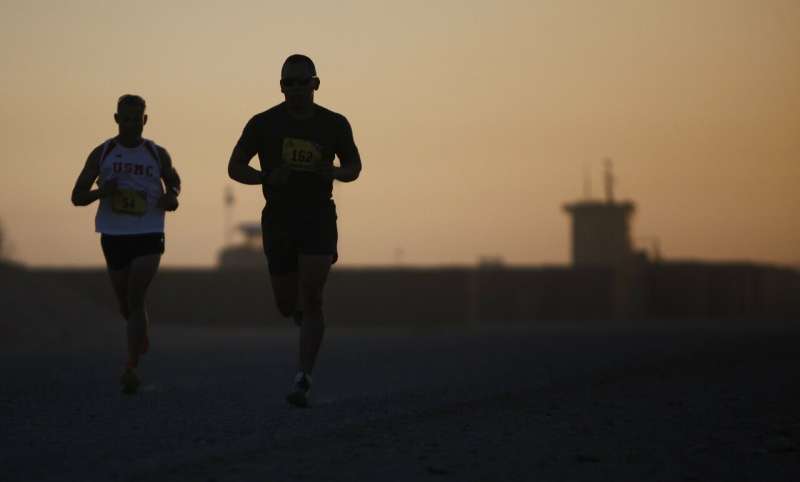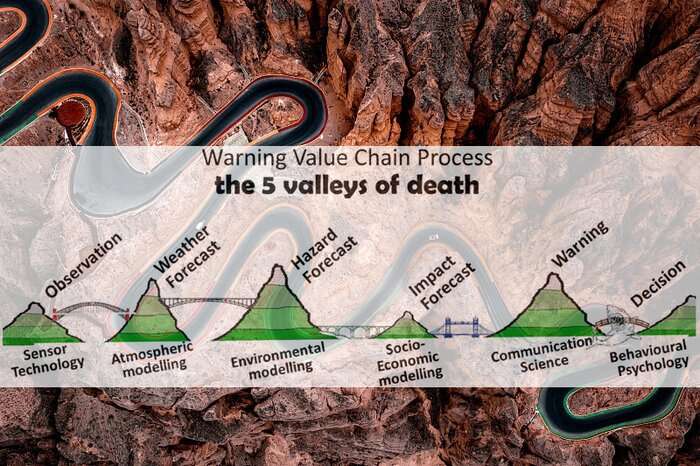Credit: CC0 Public Domain
On May 22, about 170 ultramarathon racers were climbing an eight kilometer stretch of sand and gravel to a mountain top in Yellow River Stone Forest Park in northwest China. Suddenly, it seemed, the temperature dropped, the wind picked up, and the skies opened. Mostly dressed in shorts and t-shirts, armed with foil blankets, 29 runners were trapped, exposed to the weather elements. Twenty-one runners died and eight suffered injury, all from hypothermia. The tragedy sparked outrage in China: the weather was forecasted, so why didn't the race organizers delay the race or better prepare the participants?
According to a multi-institute research team, the challenge is not necessarily predicting the weather, but rather better predicting the weather's impact. They published an analysis of the May 22 weather events and a call to action for more comprehensive warning systems on July 29 in Advances in Atmospheric Sciences.
"A good quality weather forecast does not always lead to a successful hazard warning if gaps exist in the warning chain," said first author Qinghong Zhang, professor in the Department of Atmospheric and Oceanic Sciences, Peking University, and director of the HIWeather International Coordination Office of WWRP (World Weather Research Program) under WMO (World Meteorological Organization). "The goal of this study is to identity the possible gaps where efforts can be put forth to improve future high-impact weather warning."
In the reporting of the event, according to Zhang, descriptions differed. The media called the weather an 'extreme' event, while the government described it as a 'high-impact' event. In this paper, Zhang and her team analyzed six years of hourly observations in the month of May for the area where the weather most affected the runners. They found that the high-impact weather events that day were indeed extreme, as the cold temperature was in the bottom 5% and the high wind speed was in the top 5% of the 4,464 records examined. Contextualized with the human activities of the day, the weather also becomes high impact. Without the race occurring that day, Zhang said, the weather likely would have had little impact on human life and property.
A conceptual model of warning chain was produced by the WMO/WWRP's high-impact weather (HIWeather) project in pursuit of successful weather-hazards warnings. From observation to decision making, there are several “mountains and valleys” to overcome. Collaborations among scientists in different areas, governments, social media, and citizens are needed for successful hazard prevention. Credit: Model design by WMO/WWRP HIWeather project
"Our study indicated that our current medium-range forecasting models are capable of making reasonable forecasts for this event several days before its occurrence," Zhang said, noting that the models predicted a nearly perfect 30-hour forecast of the weather leading to and during the event. "The tragedy occurred partly because detailed weather forecasts for the race site tailored to the specific needs of the users were not available. What the race organizers and runners really needed was the hypothermia risk forecast."
The researchers point to the efforts of the WMO WWRP's 10-year international High-Impact Weather Project (HIWeather), which aims to develop a chain of multidisciplinary inputs to better understand not just weather forecasts, but their potential impacts and how to best mitigate the variable circumstances.
"More than only forecasting the weather, forecasting the hazards associated with the weather and their human and societal impacts are necessary in order to reduce the loss of life and property," Zhang said. "Collaborations among scientists in different areas, governments, social media and citizens are needed for successful hazard prevention."
Other contributors include Chan-Pang Ng, Department of Atmospheric and Oceanic Sciences, Peking University; Kan Dai, Jun Xu and Jian Tang, China Meteorological Administration; Juanzhen Sun, National Center for Atmospheric Science, United States; and Mu Mu, Department of Atmospheric and Oceanic Sciences and Institute of Atmospheric Sciences, Fudan University.
More information: Qinghong Zhang et al, Lessons Learned from the Tragedy during the 100 km Ultramarathon Race in Baiyin, Gansu Province on 22 May 2021, Advances in Atmospheric Sciences (2021). DOI: 10.1007/s00376-021-1246-0
Journal information: Advances in Atmospheric Sciences
Provided by Chinese Academy of Sciences

























